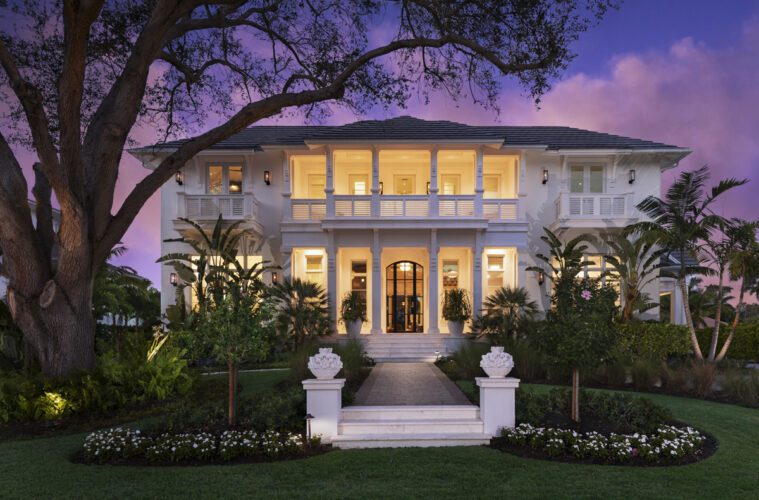Lisa Berlin is a client who knows what she wants.
Raised in Connecticut by parents who owned a custom-built home business, she learned everything she could from them. Then she ventured into finance. But once she and her husband, Bob, started a family, she decided to explore interior design. With vigor.
“I got my decorator’s license,” she says. “And I get great pleasure from it.”
She designed two homes in Connecticut, then pivoted to a site in Naples, Florida, three lots back from the Gulf. Here, she wanted no ordinary beach house. “I was very much into the style of the British West Indies: authentic and considerate to the climate, with big porches and air that flows to the back of the house,” she says.
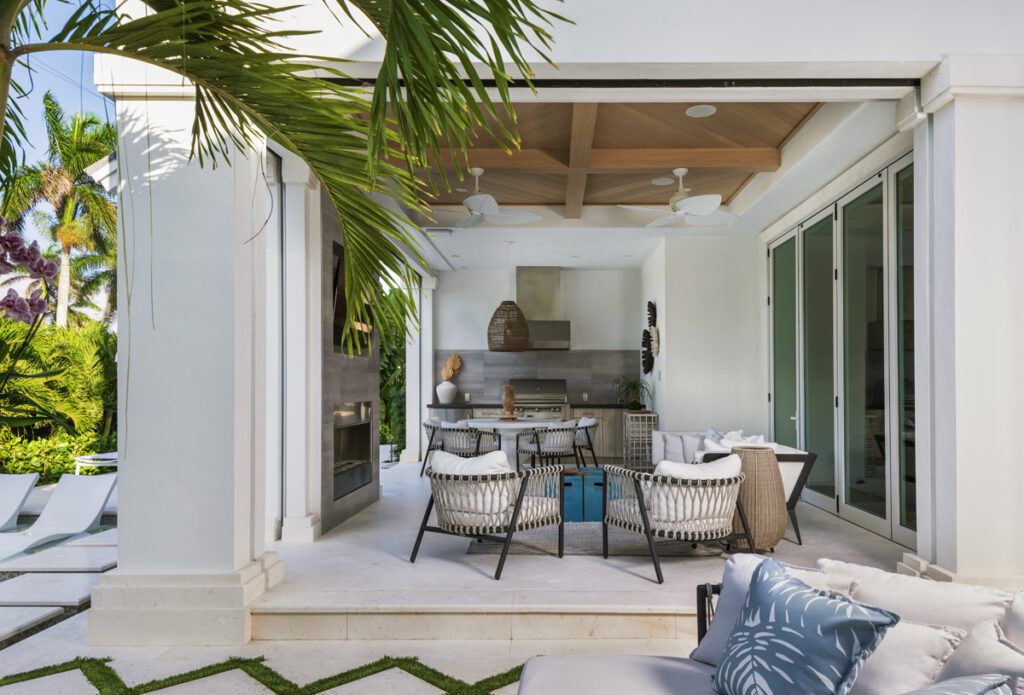

She called in a rockstar cast of architects, interior designers, and landscape architects. “Lisa was 100 percent in charge of that project,” says architect Matthew Kragh, founder of MHK Architecture. “She had a vision, she had her dreams and she told us from day one what she wanted.”
She also had friends in Palm Beach, and she imported some of their sense of flair and formality, with symmetry centered on a see-through front door. “She wanted a cool pedestrian experience from the front yard,” he says. “And she had a vision for every room.”
Berlin selected Kragh because he’s locally based, with a solid grounding in Naples’ building codes and processes. Better yet, he works closely with landscape architect Christian Andrea of Naples-based Architectural Land Design.
“Matt’s work is amazing,” she says. “But he had the ability to steer us toward Christian and his understanding of hardscape, softscape, and pool design,” she says.
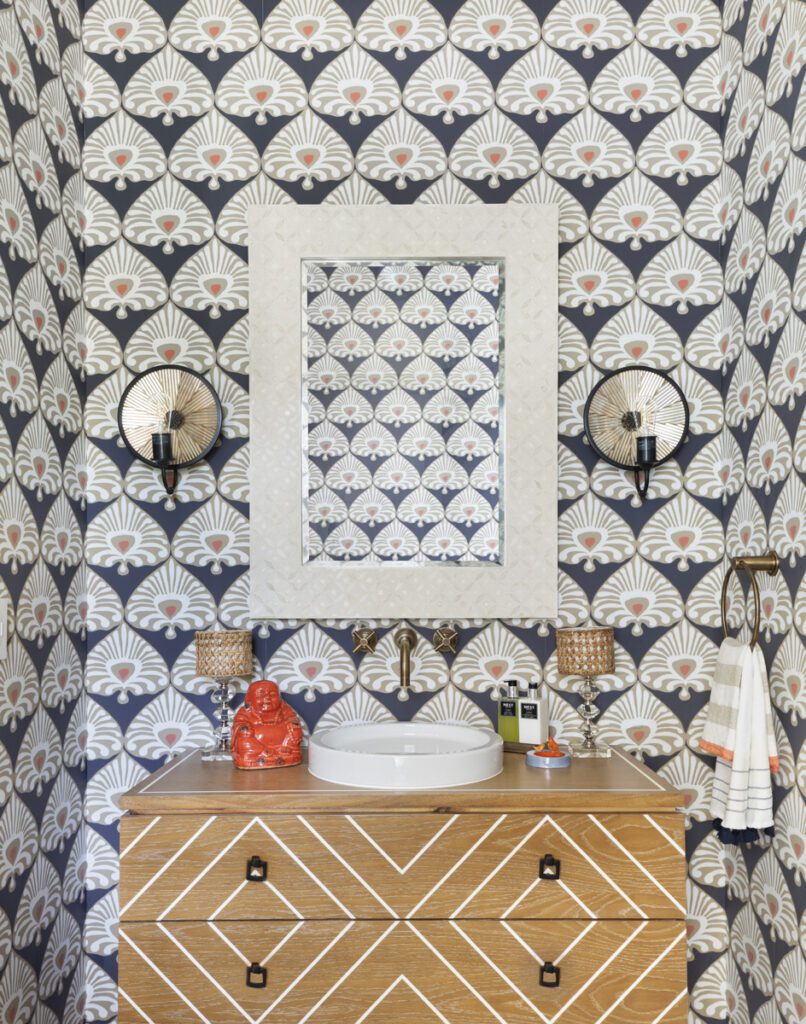

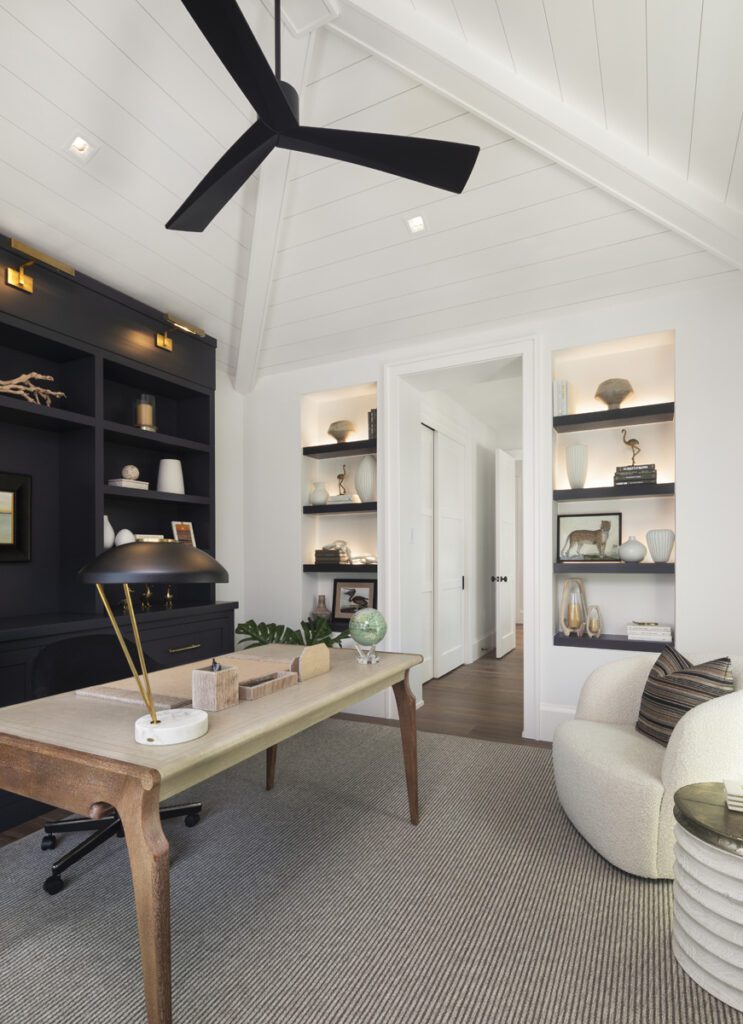

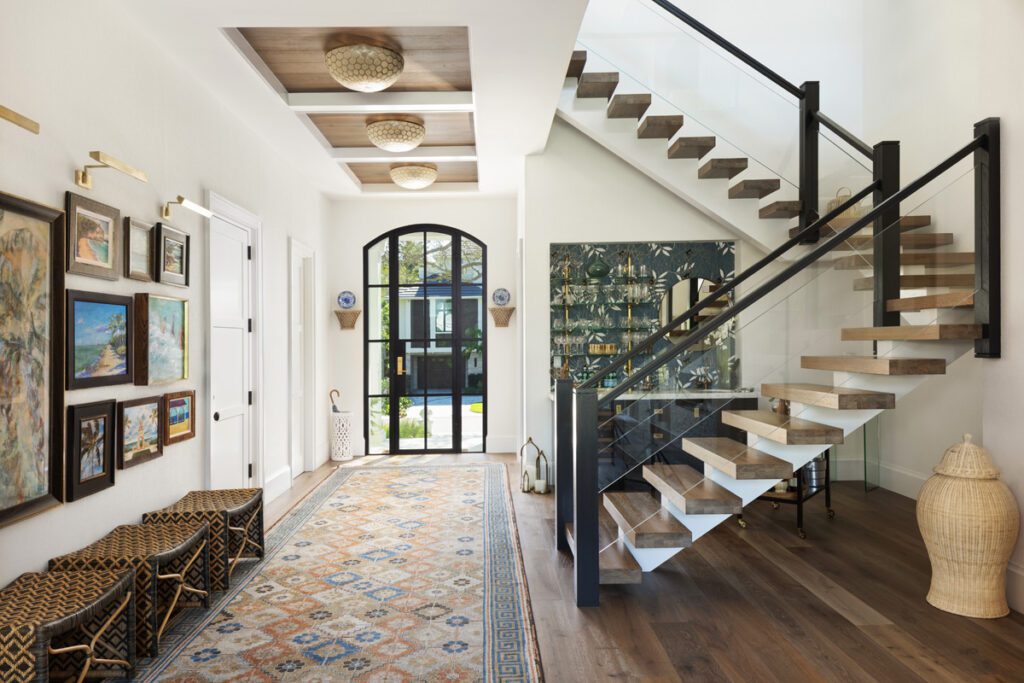

The one-third-acre site was rectangular, and offered little natural character. Its front setback is 40-feet deep, its rear is 25, and its sides are 15 feet. “That left a buildable envelope of 60-by-60 feet,” Kragh says.
From his perspective, it’s easier to build with those kind of restrictions, rather than site a home on a four-acre lot. “The restraints enhanced our creativity about how to get rooms front to back,” he says.
At approximately 6,000 square feet, the home opens with an inviting front porch, its motor court and port cochere shifted off to the east. “This way, the front yard focuses on the landscape and the pedestrian approach to the front door, rather than a sea of pavement,” Andrea says.
Berlin had two requests for the landscape design. One was for a 60-square-foot living green wall, designed by Irina Sing of Miami Vertical Garden. It’s covered in a medley of crotons, copperleaf, ficus, pothos, schefflera, caladium, and vermillion—and white or purple orchids, depending on the season. “It’s outside, but in front of a large glass accordion door in the great room, so it’s visible from inside the great room/dining area/ kitchen, as well as being the poolside focal point,” Berlin says.
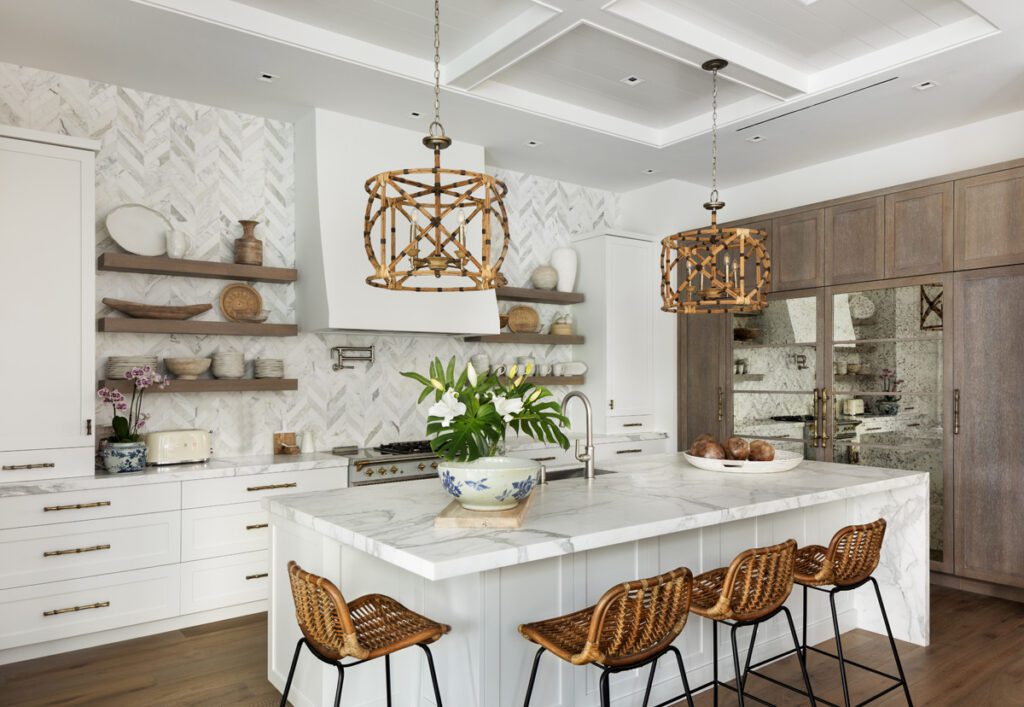

The other was a century-old live oak. The home’s builders wanted to scrape the site clean, but Andrea quietly lobbied with his clients to keep it out front on the west lawn. “Christian and Matt were designing a plan with that tree in mind,” Berlin says. “It lends a permanence to our house that others don’t have.”
On the west side of the house, a meandering shell-stone path starts at the front of the property, passes the oak, transitions into a “jungle pathway” and leads to the western edge of the pool and courtyard beyond. To the east of the port cochere is a gate with an arc top and pathway that leads to the eastern edge of the pool.
Among the 30 plants Andrea selected for that pathway is a ylang-ylang tree, whose blossoms are the source of the fragrance for Chanel No. 5. “The neighbors can smell it from 300 feet away,” Andrea says.
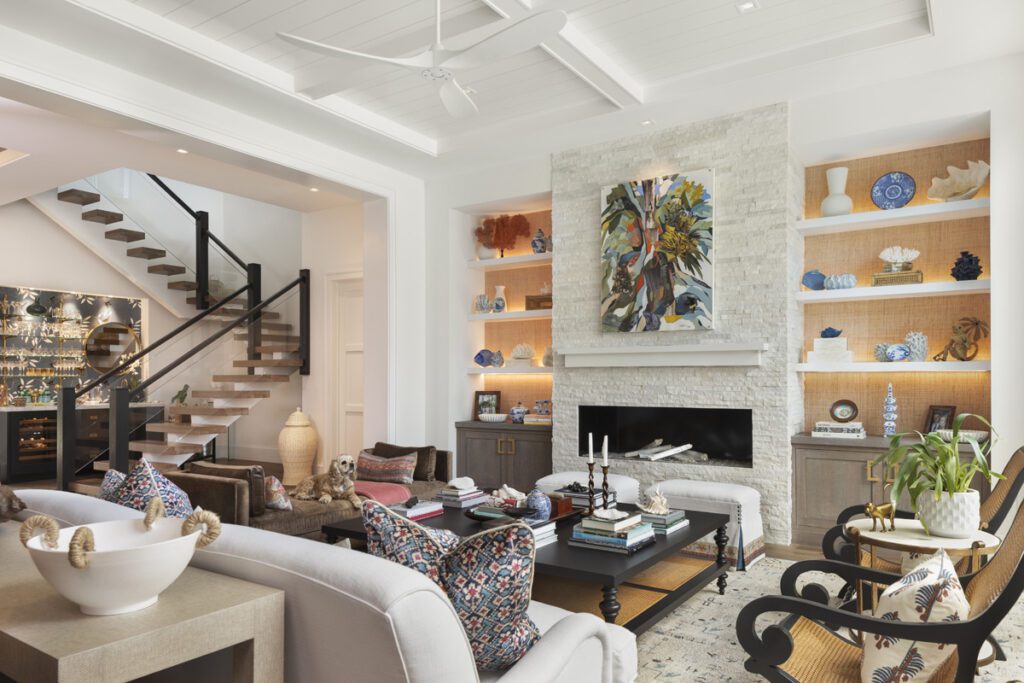

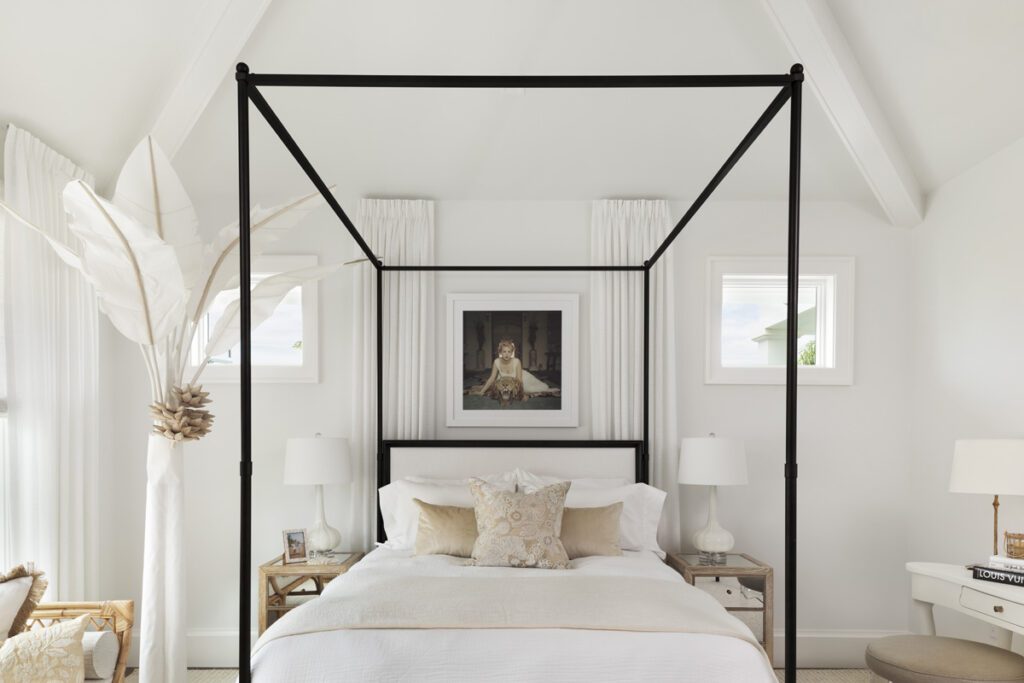

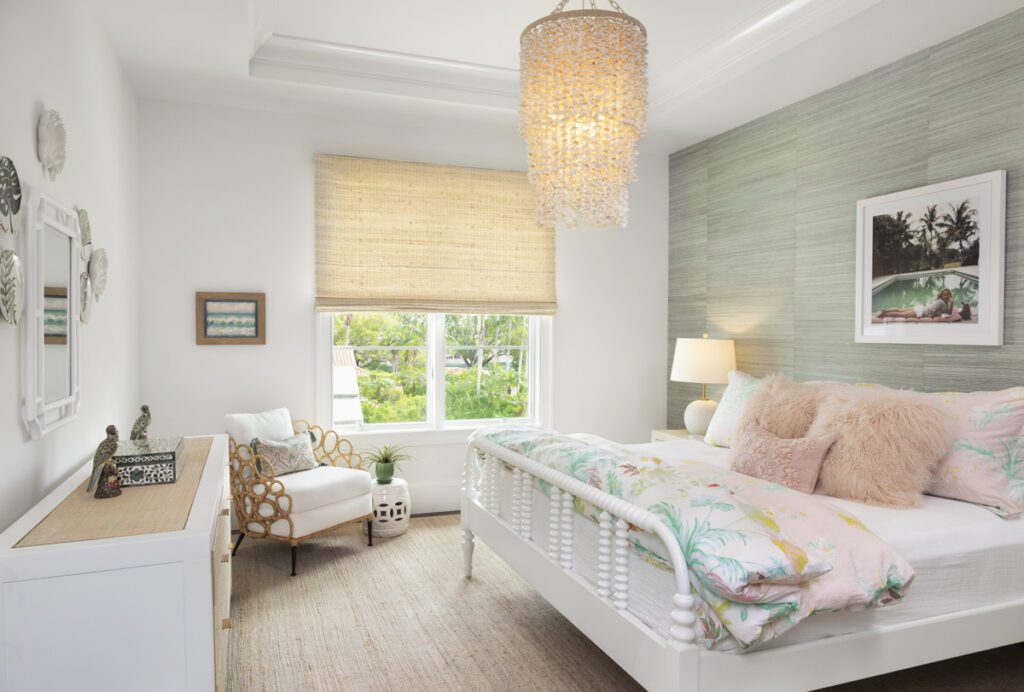

Because the site’s in a flood plain, the house, pool, and surrounding deck are raised about seven feet above street level. The home is built of concrete and masonry; 75 percent of its skin is steel-troweled stucco, and the rest is stone. The Berlins moved into it in 2022, just before a devastating Hurricane Ian blew through Naples. “We had some exterior damage, but others had homes washed away,” Berlin says.
For the interiors, she collaborated with interior designer Tracy Dwyer, who has offices in both Westport, Connecticut, and Naples. Their color palette of choice was a cornflower blue from Serena & Lily, with coastal colors in the bedrooms. “Then we brought it back to brown and white, which is classic with blue as an accent color in the British West Indies,” she says.
Sure, this design was influenced by Caribbean traditions—and by touches of Palm Beach. But the bottom line? This Naples home is totally Lisa Berlin’s vision.


